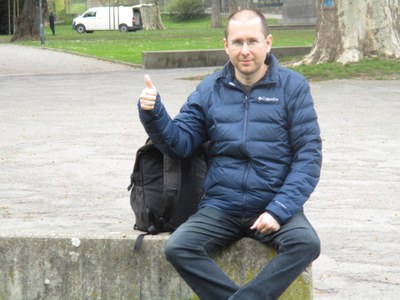Meet the FREYA Ambassadors: Dror Berger
FREYA counts on a very active group of ambassadors. We wish to introduce them here in the series: Meet the FREYA Ambassadors. This time you can read about Dror Berger.
What is your role in the world of PIDs?
I started working with PIDs in 2001, when I joined the IUCC and my initial role was a database analyst for the ULI, the union list of resources in all Israeli academic libraries, led by Prof. Elhanan Adler. Matching resources which lack identifiers is even harder in Hebrew, in which a single word can be spelled in several ways (with/without some/all of the vowels). This drove us to create identifiers for the common use of all academic libraries.
During 2007 to 2017 I worked at the National Library of Israel, leading the information systems department, creating and implementing more identifiers for academic and cultural resources, both physical and digital. We pioneered in creating a national registry of author names, disambiguating values represented in different scripts – Hebrew, Arabic, Latin and Cyrillic.
Since 2017, I work as the technological leader of the Israeli CRIS & ORCID consortia, comprising a nationwide project aimed at joining all the universities in Israel under the same research information system and unified research repositories. This role requires me to promote and establish a nationwide adoption and creation of more PIDs which are recognized both in Israel and internationally.

Why did you become a FREYA ambassador?
As the technological leader of the Israeli national research infrastructure project, I am well aware that PIDs are the essential building blocks for sustainable and reliable research data infrastructure. The PIDs are even more important in a three language-three scripts-two directional environment, as is the case in Israel. Our research community operates and publishes in English, Hebrew and Arabic, making it even more difficult to link between entities.
I advocate the use of PIDs in all the different relevant sectors, both in Israel and in the Hebrew/Arabic publishers and repositories worldwide. I am aware that academic research entities in Hebrew and Arabic are far behind European languages when it comes to adopting PIDs, and I hope to change that with the help of FREYA.
I also plan to analyze the gaps within our community, defining missing PIDs that will enable us to make our research data infrastructure more inclusive. That will allow us to further transform our research data infrastructure with the help of FREYA’s common knowledge.
What would your perfect (PID) world look like?
- Fully automated processes based on the PID graph.
- Fully controlled by the individual owners and not by the registries, commercial enterprises or national regulators (e.g. – Control the data elements and decide which of them to share, and with whom).
What do you think FREYA will offer to the PID services more generally? How do you think you might apply FREYA’s outputs such as the PID Graph in your work?
I believe the most beneficial outputs are the knowledge and best practices that are shared using the various platforms. These are later distributed to the local communities of practice by the ambassadors and advance the work that is being done. Also, the ability to map the different PIDs, crosswalk between them and applying the PID graph to automation processes
More information
I work for both the IUCC (https://www.iucc.ac.il/en/) and Tel Aviv University (https://english.tau.ac.il/). My ORCID is https://orcid.org/0000-0001-8512-9281.